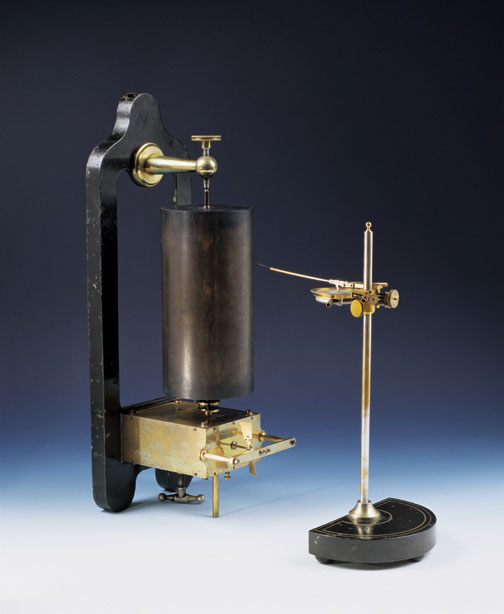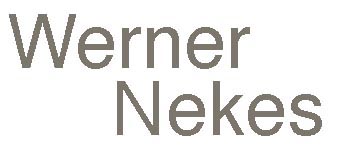Glossary M
A - B - C - D - E - F - G - H - I - J - K - L - M - N - O - P - Q - R - S - T - U - V - W - X - Y - Z
Magic Lantern
Also known in German as the 'lantern of fear'. 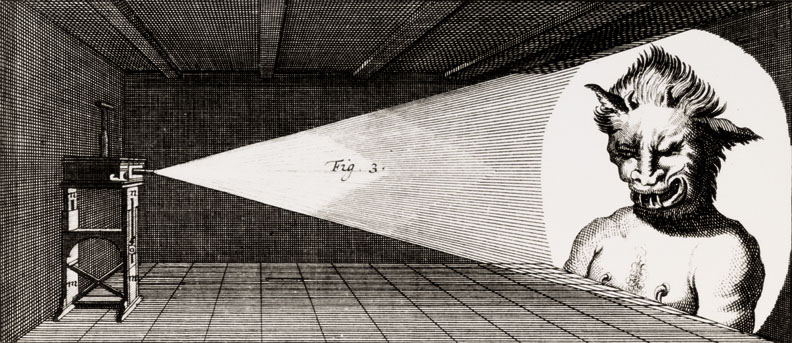
Inside a box there is a light source; a concave mirror is fixed to the back of the box to intensify the light by reflecting the light beams forward, parallel to each other. At the front, opposite the mirror, is a tube with two vertical convex lenses inside it. Beyond the common focus point of the two lenses a transparent picture is inserted into the box, reversed and upside down. 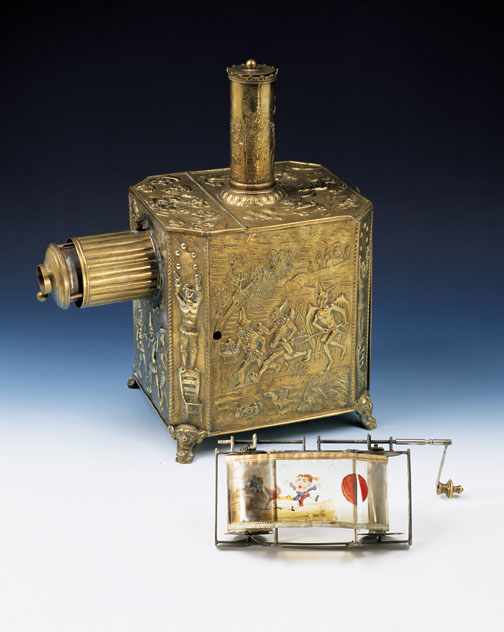
The lantern projects a corrected version of this image onto a screen or wall. The invention of the magic lantern is credited to the Dutch physicist Christiaan Huygens (1629–95). Although he made no practical use of his invention, he was already drawing a moving lantern image of a dance of death for the magic lantern, as early as 1659. In 1665 the Danish mathematician Thomas Walgenstein (1622–1701) presented a magic lantern as a great novelty at an exhibition in Lyon.
In Amsterdam in 1671, Athanasius Kircher (1602–80) published the second edition of his Ars magna Lucis et Umbrae (The Great Art of Light and Shadow) with the first illustrations of a magic lantern projecting images. At the beginning of the eighteenth century traction, rotation and leverage mechanisms for glass pictures were already being used in order to project moving images.
Myograph
[Greek: myo = muscle; gráphein = to write, to draw]
In order to scientifically record the mechanisms of movement, the French physician Etienne-Jules Marey (1830–1904) developed a whole variety of devices that could make a graphic representation of the movements of humans and animals.
These devices included, amongst others, the sphygmograph, the cardiograph and the myograph, the immediate precursors of the cinematograph. In the case of the myograph, a stylus – attached to a Marey membrane (tambour) – translates pressure into moving writing in the shape of rising and falling lines on a soot-blackened rotating cylinder. For his chronophotographic shots, Marey replaced the blackened cylinder with a photographic negative and the steadily recording stylus with a rotating disc, with slits in it that allowed the movements to be exposed onto the negative.
Myriorama
[Greek: myrio = 10,000 times, high number; horama = that which is seen]
Vertical montage of a segmented panorama – literally the ‘many thousands view’.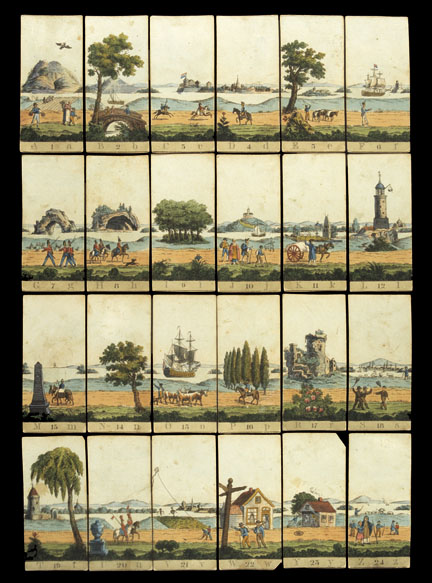
These picture sequences, which could be combined at will in a variety of ways, were invented by the Frenchman Jean-Pierre Brés around 1820. A landscape panorama would be cut into 16, 24 or 36 equal vertical segments. Since the horizon line was always at the same height where the segments met, the individual sections could be interchanged in endless variations. The motifs chosen were generally of topographies that were not readily identifiable – mountains, rivers, coastal landscapes.
In order to lend unity to the whole, in the foreground of the picture there would be a path or river, or suchlike. It was essential that in this lower zone of the view there should be no breaks or sudden shifts in perspective which would destroy the impression of continuity. Only in the middle ground was there a rapid move from one feature to the next: ruins and rocks, a fir tree and a waterfall, and so on – pictorial elements that could generate ever more new landscapes.
